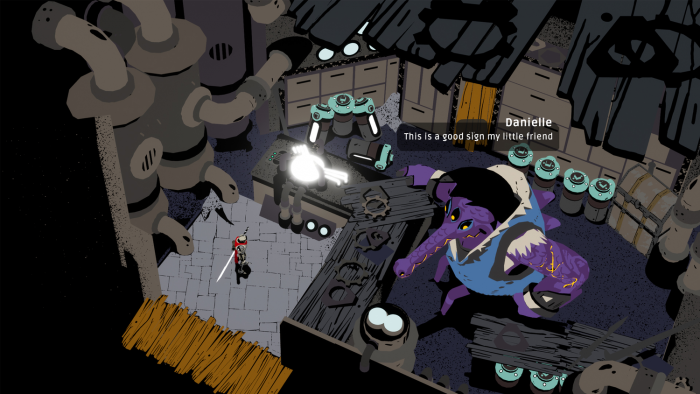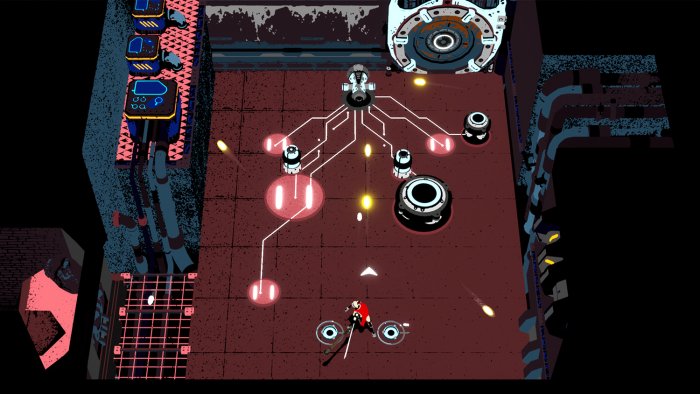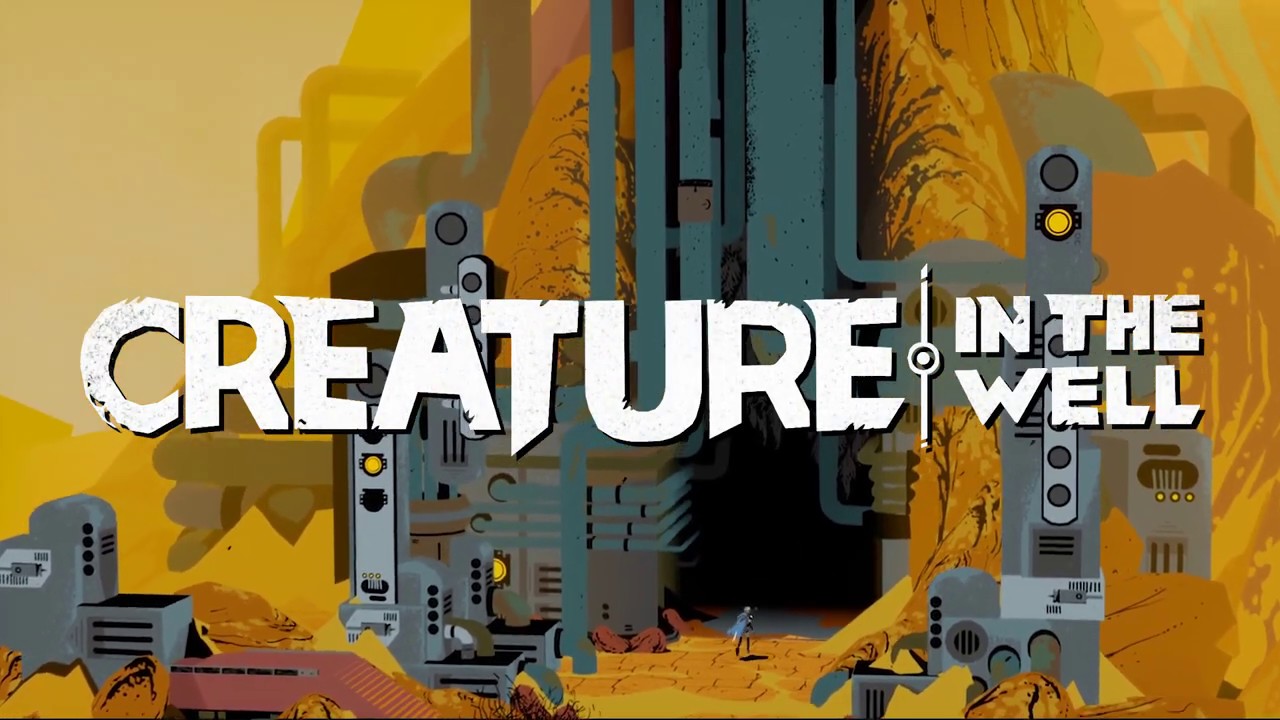
Something about Creature in the Well feels really familiar, but I couldn’t put my finger on it at first. It wasn’t the mashup of game genres, it wasn’t the influences of art styles and music, it wasn’t the post-apocalyptic world. All of those are highlighted in the game loudly, not kept in the background. It was something different, something subtle. Something that had to do with the game’s monster, and our interactions with it — or lack thereof.
The beast, which we never really see, but whose presence we always feel, is watching us, plotting against us, and one step ahead of us, no matter how wily we are. We can’t reach it, even if we try. It sets up traps while we sneak around. It launches attacks to overwhelm us. It generally wants us out of its home, even if our purpose is to burgle around in hopes of saving the planet.
Its home. Its… home.
And then, it hits me. This isn’t some monster. We’re not the heroes. We’re the Wet Bandits, the monster is Kevin, and this is Home Alone. And suddenly I feel strangely sympathetic towards this monster, even if everyone and every situation tries to explain to me that it’s the problem.
Creature in the Well subtly tells us that we’re the problem, or at least the cause of it, and it’s up to us to correct it.
The game throws us right into the world as a suddenly reawakened BOT-C engineer robot. Our goal is simple: reactivate the weather station that has gone dormant over the years, unwrapping the mystery of the giant life form that has taken it over. Why we strive to do this is unknown at first, but as the story unfolds the mystery deepens as more is revealed. The monster itself has other plans, claiming ownership not only of the mountain facility but the nearby town, and all the denizens in it. The plot isn’t groundbreaking, but it’s surprisingly forward thinking, with hints of environmental protection amid the constant threat of our IRL world heading towards a similar blazing desert future.

That storytelling is further emphasized by a gorgeous art style, with direct homage to the work of Mike Mignola of Hellboy fame, relying on high contrast blacks and whites with patches of flat colors and thick linework. Every scene looks like a graphic novel, and pausing the game to get a screen cap can lead to some nice wallpapers. The visuals look great on a big screen, and the contrast pops just as nicely on the Switch in handheld mode, though the font is small and becomes a little difficult to read. As we traverse through rooms, the Creature makes its presence known when eyeballs suddenly appear in the darkness, or a hand wraps around a boulder in the distance. The muted colors, however, tend to play down the different objects, so the screen can get crowded very fast without any specific place to focus our eyes, leading to some panicky moments when enough enemies and laser balls start bouncing around.
Ah yes, the laser balls.
Because the facility relies so much on electrical power, we’re required to reboot several of the machines inside to get it running again, and to do that we need to harvest energy from the rooms within. This is where the genre mix comes in. CITW is an action dungeon crawler first, with a pinball gimmick laid over top of it. The overhead vantage point works with both genres, with the screen shifting and rotating depending on the puzzle within it. The game plays out like this: we enter a room, seeing a locked door that requires a specific amount of electricity to open. To gather that, we need to knock down enough of the bumpers to activate an energy drawing device in the center, which grants us massive amounts of the precious power. The bumpers are removed by us swinging our weapon at energy balls (I like saying “laser balls” more) to knock them around. If the bumpers are hit enough times, they’ll drop. If we miss with our aim, the balls bounce around the room until they fizzle out. Simple and easy to understand.

Now, layer puzzle aspects on top of that — timed bumpers, barriers, voids, harmful drones, enemy lasers — and each room has its own method of completion. Some of these rooms are easy to understand, while others are complex and multi-faceted. CITW is never without puzzles and complexity, and feels like the team knew exactly how many to include to keep us from feeling overwhelmed. It’s the perfect amount, and they seem to pop up at just the right intervals to keep us engaged. However repetition does stunt the experience a bit. Most of the bumpers are in the same layouts, the enemy drones and laser towers are identical, and the rooms are sometimes just carbon copies of each other. All we really do in the game is swing and hit balls around — there aren’t a lot of physics involved, so at times the game sometimes feels like a bullet hell shooter in which we smack the bullets back rather than actual pinball.
Thankfully the weapons add a little bit more strategy to the experience. The game gives us two types of attacks: an aggressive swing and a charged attack. The swing attack is our main mode of knocking balls around, and depending on which weapons we find we can unlock new enhancements, like being able to slow down time. The charged weapons are our secondary attacks, and allow us to gather pinballs into larger, more powerful groups to launch them all at once. This gives us a few more options in how we solve the puzzles, and the enhancements become invaluable later on.
Creature in the Well is a fun little game, and well worth the time to sink our voyeuristic monster teeth into, regardless of which genre we prefer. The visuals and plot, and novel pinball action, are enough to prove that innovation can happen when disparate ideas crash together. It may feel like it’s a little stuck between dungeon crawling action and pinball at times, but that whets our appetite for even more aspects of pinball to be baked in if there are future iterations.
Perhaps CITW 2: Lost in New York can bring even more pinbrawling to the forefront.
This review is based on a Nintendo Switch eShop code sent to SideQuesting by the publisher


No Comments